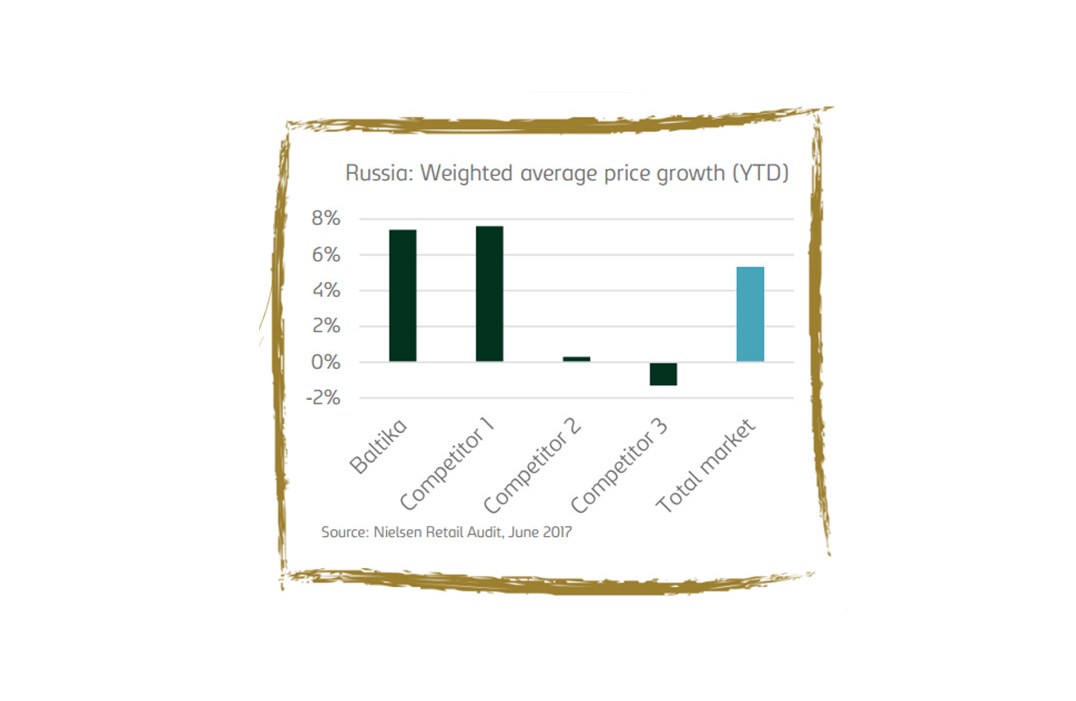Beer price erosion is a big worry for all
For longer than most like to remember news coming out of Russia represented an unmitigated disaster for international brewers. Over the past eight years, Moscow has raised taxes on alcohol and banned advertising. In January 2017, finally, it began limiting the size of plastic beer bottles to a maximum of 1.5 litres.
If you think that’s an obscenely large size for a beer bottle, remember that in 2014 Russian brewers voluntarily stopped using plastic beer containers larger than 2.5 litres.
In a declining market, some brewers chose to do the obvious thing: they aggressively slashed prices to keep up volume sales and ultimately market shares. Initially, Carlsberg played this game too. But they seem to have seen the end of this route. So they began raising prices to preserve profitability. The result: Carlsberg’s subsidiary Baltika reported a five percent drop in the brewer’s share of that market during the first half, to below 30 percent.
Carlsberg’s shares sagged, especially as the brewer warned of a tougher third quarter and avoided raising its full-year profit forecast.
Media reported that prices of plastic-bottled beer in Russia are now so low that they must be hurting everybody. Baltika’s brands are usually priced a few percentage points higher than competitors’, but the difference is now as much as 30 percent in some regions, a situation that Carlsberg says can’t last.
“Obviously, it’s not a sustainable price gap,” Carlsberg’s CEO Cees ’t Hart said of the price at which Carlsberg sells its beer in Russia versus competitors. The brewer will assess the market in the second half of this year and then review its pricing for 2018, he said in an interview.
Under the circumstances it must be a good thing that Anadolu Efes and AB-InBev combined their forces in Russia. At least it might lead to better pricing discipline, which would benefit all.
Carlsberg’s first-half operating profit rose 15 percent as cost savings compensated for declining beer volume, particularly in Eastern Europe. The quantity of beer sold in the region fell about 13 percent in the second quarter.


